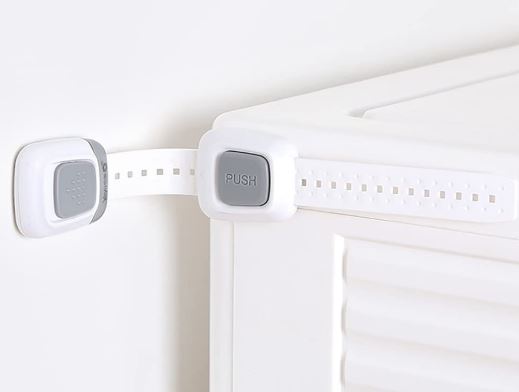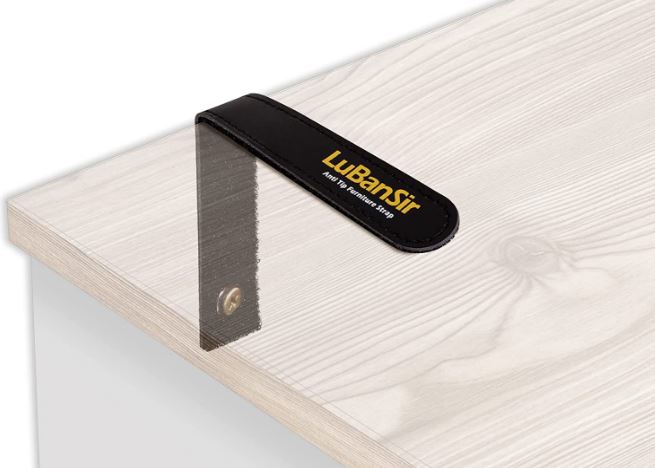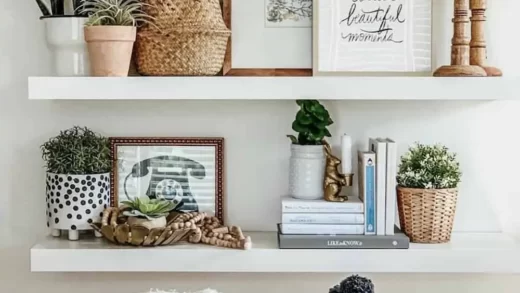The best furniture anchors will calm your fears and, more importantly, keep Baby secure. Finding a secure method for mounting furniture to a wall that doesn’t involve screws can be difficult.
Read on if you want to avoid risking property damage or if your lease forbids you from screwing anything into the wall. In order to maintain furniture security without sacrificing aesthetics, we have found some useful tips.
Table of Contents
What Are the Benefits of Furniture Anchors?
There are five benefits of furniture anchors listed as follows.
Child Safety
furniture straps are designed to protect children and pets from the dumping of furniture, even during earthquakes and windstorms. In order to create and maintain a safe environment for your kids and pets, wall anchors can be used to secure furniture to the wall and prevent it from toppling over.
High-Quality Wall Straps
Furniture safety straps now have greater stiffness and strength than those found on the market thanks to the use of new materials. These furniture straps have excellent flame resistance, high stability, anti-aging, and cracking properties, which significantly improve the safety and stability of keeping your furniture in place.
Excellent Size
Ten furniture safety straps are included in this package with the furniture anchor. The adjustable furniture wall anchor is also packaged with clear installation instructions and all required hardware. The size of the anchor for furniture is just right.
Widely Application
Ideal for securing a TV stand, cabinet, bookshelf, dresser, wardrobe, and other items. NOTE: At least two straps are needed per TV or piece of furniture in order to effectively protect it.
Easy to Install
These furniture wall anchors can be installed either vertically or horizontally. Additionally, you have the option of selecting a single or two mounts. When used, the baby safety strap offers a positive and dependable lock that slips off easily with a press of the release, allowing you to clean behind your furniture quickly and safely.
How Do You Anchor Furniture to a Wall?
While your best bet is using a kit that comes with instructions (below) or even enlisting the help of an expert, Levitonm shares a few general installation tips: “Use the thickest part of the furniture as high up as possible,” he says. “On top of furniture or on upper shelves, avoid stacking heavy objects. If you’ve placed a heavy appliance, like a TV, on top of furniture, secure the TV as well. Employ someone who is knowledgeable about safely fastening the straps to brick or plaster walls if your walls are those types of construction.”
Finally, he suggests taking into account anchoring furniture in any home where your soon-to-be toddler will spend a lot of time, especially in the homes of elderly residents. “Also, grandparents ought to anchor furniture. Not only are their grandchildren being protected, but also they themselves. More than 15,000 people have hurt annually by falling furniture, many of them adults, according to the Consumer Product Safety Commission.”

The sad fact is that each year, dozens of injuries caused by furniture tipping result in fatalities and occur every 30 minutes for children who go to the emergency room. In order to keep your child safe and prevent you from having a heart attack every time they crawl toward the TV, let’s.
How to Secure Furniture to Wall Without Screws?
You can attach furniture to a wall in a number of different ways without using screws. Look at the suggestions below.
Skip the Screws to Secure Furniture
When using brackets or L-hooks to secure furniture to a wall, you may not always be able to drill holes in the wall to accommodate the screws, but you still need to maintain the security of your furniture. Fortunately, there are specialized anti-tip kits that can be installed without causing damage to the wall. To keep furniture close to the wall, many kits sold both online and offline have brackets that are threaded with steel cables, Velcro straps, or plastic ties. Dowels, pins, or drywall posts are some alternatives to screws when it’s impossible to screw in furniture. All of these, however, call for large holes to be punched in walls.
One should take precautions to lessen the possibility that a bureau or bookshelf will topple over and injure someone in the event of a natural disaster or an accident at home. If using a store-bought kit bothers you, you could try attaching brackets with adhesive and securing furniture with a homemade tool. Whatever approach you select, do more research to determine which is most effective for you. Whenever possible, enlist the aid of a certified expert for installation or guidance if unsure.
A tragedy involving pets, kids, or the elderly and shaky or unstable furniture can be avoided by mounting furniture to the wall. Additionally, if your furniture isn’t frequently falling over and tipping over, you can ensure its durability.
Glue
Try using glue instead of studs, screws, or drilling holes in the wall to secure a bracket or hook. Make sure the wall’s surface is spotless and that whatever you are mounting is situated level. After taking the required measurements, you might want to make a few light pencil marks on the wall. Put a thin layer of urethane glue on the back of the hook or bracket that will be attached to the wall. Give it at least 24 hours to completely dry and set.
The furniture you require close to the wall should be attached to the mounted pieces using a tether system. Steel cables, Velcro straps, or plastic ties are all options for this. Note that you might need to drill or glue hardware into the furniture’s back. Be aware that in cases of jolting, natural disasters, or top-heavy furniture, this method may not be adequate for holding the furniture to the wall. Use glue to conduct a test to determine how stable the mounts and tether system are. To strengthen the connection around the edges of the bracket or hook attached to the wall, caulk may be required.
Quakehold Universal Flat Screen Safety Straps
Most homes have one or two large flat-screen televisions. This piece of entertainment furniture should be secured to prevent damage that cannot be repaired. Additionally, it can protect children and animals from harm. Two strong nylon straps with buckles are included in the Quakehold kit to secure the television. TVs that weigh up to 150 lbs. and are up to 70 inches in size. are best suited for this kit. To prevent a TV from tipping over, peel-and-press adhesive mounts can be attached to a piece of furniture or a wall.
QDOS Furniture Anti-Tip Kit
If a dresser, television, or shelf is not mounted to a wall, curious kids and animals risk hurting themselves. To decrease accidents, QDOS created an anti-tip system that has been filed for patent. To keep fixtures secure, customers can use adhesive to attach a bracket to the wall and tether their furniture to it. To attach the supplied brackets to a wall stud, use the screws that are included. A picture hook-sized hole is a maximum size they should leave.

The QDOS kit claims to be capable of supporting up to 200 lbs. Additionally, you can loosen or tighten the straps as necessary if you need to rearrange, clean, or move furniture. Without drilling a hole or using screws, the anti-tip kit’s two patented hooks can hold the mount to the studs in a wall. An adhesive is used to attach a small disc to the furnishings.
What Are the Best Kinds of Furniture Anchors?
As far as the most durable materials, Leviton says, “Verify the straps’ material to be either braided metal cable or vinyl webbing. Wood screws that are two inches long should be used for the wall attachment. Replace any smaller generic screws that are present in the kit with long wood screws. Instead of using toggles or drywall anchors, find the nearest stud in the wall and screw into it.” While there are some popular plastic versions out there (they look and work almost like zip ties), the pro advises against using plastic straps or screws.
How to Fasten Anchors in General?
No matter which system you employ, it is crucial that you are aware of what you are screwing into on both the wall and furniture sides. Many prefabricated pieces of furniture have thin backs that are only tenuously fastened with a few staples and can rip out if the piece begins to totter. As you might have noticed on the Hangman TK-400 product page, the clip is positioned against the thicker top piece rather than the back of the furniture. Always look for a solid wood section of the piece of furniture, whether it be along the top, the sides, or on a shelf or drawer divider, and mark that spot for mounting. Install the screw across the pressed layers, not in line with them, if the furniture is made of particle board.
It’s crucial to drive your screws into a stud (the vertical framing members) on the wall side. These are typically 16 inches apart in most homes, and you can find them using a dependable stud finder (see here for more information on stud finders).
To ensure a secure connection for the hardware, you must use proper basic drilling and driving techniques for the mounts on both the furniture side and the wall side. The screw installation process is facilitated by drilling a pilot hole, which improves screw placement accuracy. For proper drill-bit sizing, a rule of thumb is to select one that is the width of the screw minus the threads (most installation instructions will specify a bit size). To know when to stop drilling while drilling into the back of a piece of furniture and if you’re concerned about coming out the other side, wrap a piece of blue tape around the drill bit at the appropriate depth. If your anti-tip kit of choice doesn’t come with mounting hardware and you’re buying your own screws, get screws with at least 1 inch of “grab” on the stud. This requires a minimum of a 158-inch screw for a typical wall made of ½-inch drywall. Furthermore, a coarse-thread screw will grab more firmly than a fine-thread screw.
Should IKEA Furniture Be Fixed to the Wall?
The best course of action is typically to take preventative measures. It is not required for IKEA furniture to be fixed to a wall, but doing so is strongly advised to protect users from unintended mishaps or injury. The furniture from IKEA may be more or less likely to topple over depending on its design and construction. To ensure safety, households with young children, animals, or elderly members should fasten furniture to the wall using any provided hardware.
Do All Dressers Need to Be Anchored?
If you’re wondering whether dressers generally need to be anchored, the answer depends on your personal preferences and the design of the dresser. A dresser made of heavy metal or wood that is not top-heavy may not require securing. The drawers shouldn’t be opened to the point where an uneven weight distribution makes the furniture susceptible to tipping over. A dresser’s foundation or any legs should aid in maintaining its stability. If in doubt, choose to anchor a dresser, especially if children or animals are at risk of being hurt by falling furniture.
Do I Need to Secure a Bookcase to the Wall?
Secure a cheap bookcase to a wall if it has hardware that is easily removable or a lightweight backing. For added safety, some bookcase designs, like ladder-style bookcases, should be fastened to a wall. To be safe, secure the bookcase to a wall in any house with pets, kids, or elderly residents. Additionally, you should secure the bookcase if you live in an earthquake-prone region.
Are Furniture Anchors Necessary?
In the US, one person is killed every 20 minutes. is injured due to an appliance, According to Consumer Reports, a TV or piece of furniture toppling over. It’s for this reason that anchoring your furniture to prevent tip-overs is one of the most fundamental steps you can take in rendering your home a little safer.
Conclusion
Make sure to test the effectiveness of your method for securing your furniture after installation. A falling or toppled-over piece of furniture can cause harm or even death to many young children, curious animals, and adults. To avoid unsteady situations and to make sure the furniture is level on the floor, lessen the weight at the top. An ingenious way to safeguard people, pets, and furniture is to fasten furniture to the wall without using screws.



